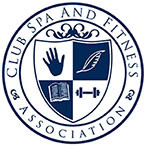Youth Sports Training: Four Proven Tips
Spring sports leagues are in full swing and it’s a time when parents may be looking for some additional youth sports training for the young athletes in their families. Almost every youngster can benefit from working with a fitness trainer, whether to improve strength and endurance for sports performance or to get in better shape to improve their health. Some youth athletes may have the benefit of an organized training program through their sports organization, but a typical rec league probably won’t have such an offering. Likewise, pediatricians may recommend a formal fitness plan for a patient struggling to lose weight. In these cases, your services as a personal fitness trainer may be called upon.
Safety—and fun— should always be top of mind when working with youth clients. These 4 tips will help you, and the kids have a good experience.
Tailored techniques
The basics of fitness training are the same for youth and adults, but you will need to vary the concepts and techniques you use for different age groups to help each realize optimum results. Adolescent bodies are still growing and it’s important to be aware of muscle groups and joints that are especially vulnerable to strenuous activity. Teaching one movement or skill at a time and working until it’s perfected—with breaks along the way—is a smart approach.
Lead by example
Kids are visual learners, so correctly demonstrating the proper techniques for any given skill is vital to teaching and learning. No matter the type of youth sports training, whether you’re teaching weight lifting, running or using a fitness machine, demonstrate the proper movements numerous times before engaging the youth in the activity. And be patient. It may take a number of tries before a young trainee fully grasps a technique, but with your repeated demonstration and guidance, he or she should pick it up eventually. Modeling the correct techniques will not only ensure your students’ safety but will set them up to achieve better results. And if a youngster can’t seem to learn a skill you’re teaching, move on to something else and revisit it later.
“A” for Attitude
Always exude a positive attitude and sincere enthusiasm when training youth. This is especially important, because young people are more readily influenced by other people and experiences than adults. Do what you can to instill a passion for making fitness fun and a desire to work hard. This should empower young trainees to put forth their best effort. You may even help boost their self-esteem.
Perseverance pays off
It’s common to want immediate results—it’s an expectation we have in much of what we do. In fitness, however, results never happen immediately and you have to work hard to achieve them. For youth, teaching perseverance can be especially difficult depending on the type of training or the desired results. This is where, as the trainer, it helps to use some creativity. Try working in a larger combination and variety of activities to help keep the interest of your young trainees. Establishing milestones and offering small incentives for achieving each one can motivate younger clients to keep working toward the goal—whether it’s the prospect of winning the next ball game, shedding some pounds, or finishing a race with a faster time.
Finally, it’s important to keep in mind when you’re engaging in youth sports training, that youth trainees want to be validated: they want their trainer or coach to approve of how they’re performing. Even if there’s room for improvement in a given moment, always be encouraging with your words and actions. Fostering a good mental state is a crucial element to fitness success, no matter how old your client is.
Customer Feedback
-
Thank you so much for your prompt response. Might I add, Veronica was a delight to work with and her professionalism and attention to detail made this an overall pleasurable experience.

Earl W.




















